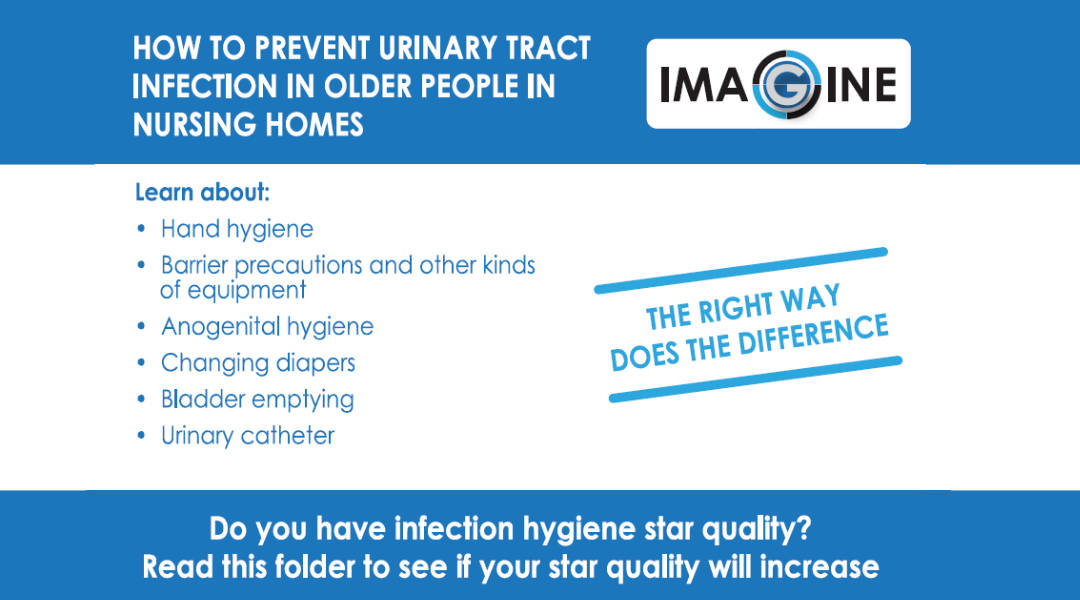Elderly people living in nursing homes are at high risk of contracting infections, but by taking simple measures, it is possible to improve the quality of their hygiene and help prevent urinary tract infections (UTIs). With this goal in mind, Imagine Project has developed this tool, based on contributions from the nursing homes participating in the consortium, which can help maintain and or improve basic practices that have proven effective in reducing the risk of UTIs.
Hand hygiene
First of all, it is essential to have good hand hygiene, that is, disinfection and washing, which involves intact skin, sleeves above the elbow, short nails without polish, and no jewelry. This hygiene should be done before and after all tasks related to a patient’s hygiene or after using single-use gloves.
Barrier equipment
Additionally, to prevent the transmission of bacteria from clothing and work equipment to the urinary tract, residents should be protected against UTIs by using single-use gloves and aprons, which should be discarded after each use and when moving from a dirty task to a clean one. Furthermore, barrier and protection equipment such as wipes, towels, washbasins, or the container for the urinary catheter bag should be clean and not used for other tasks or other residents to avoid the transmission of microorganisms.
Anogenital hygiene
It is important to wash the urethral opening in the direction of the urethral opening, from inside to outside, as it is the entry point for bacteria that can easily be transmitted to the urinary tract and cause a UTI. This should be done daily and with diaper changes, the latter at least three times a day and as soon as possible after urinating, in addition to choosing the correct size that can absorb the amount of urine between changes, and always exploring offering help to go to the bathroom as an alternative if possible.
Bladder emptying
Another issue addressed in the tool is bladder emptying, where it is important to help spend enough time and ensure a good sitting position in the bathroom or consider indicating to the patient to perform triple emptying, if possible. This option involves attempting to empty the bladder three times in a row, instead of just once, which can help further empty the bladder and make people feel more secure by avoiding residual urine. Here, hand hygiene is also necessary immediately before and after helping with the bathroom visit and trying to do it at least three times a day, always according to the patient’s physical and mental state.
Urinary catheter: placement, handling and emptying
If it is not possible, there is always the option of using a urinary catheter, which should be applied with an aseptic technique, involving good hand hygiene immediately before and after the insertion and or handling of a catheter. Additionally, it can only be inserted by trained healthcare personnel, kept clean, as well as the meatus, evaluated daily for any pain or discomfort, and removed when no longer necessary.
The use of the urinary catheter involves handling and emptying the catheter bag, which also requires hand hygiene before and after, and wearing clean single-use gloves and aprons. It is important to remember that it should be new with each change, placed below or at the level of the bladder, and with the tube well fixed to avoid bends or pulls. And, above all, empty it when it is at most ¾ of its capacity to avoid stasis in the tube and reflux, and not leave it on the floor to avoid transmitting bacteria from the floor.
For more details, feel free to download the tool on our website by clicking here.

